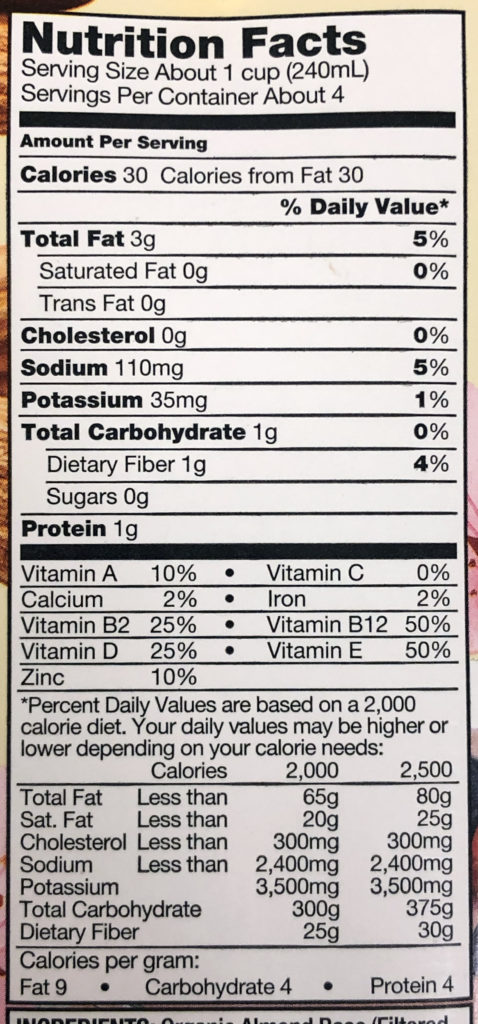Is your body trying to tell you that you are lactose intolerant?
Share

What is lactose intolerance and what are its symptoms? Is lactose intolerance one and the same as milk allergy?
Have you ever felt bloated and/or gassy after drinking a cup of milk or even a cup of coffee with a little bit of half and half? Have you had diarrhea after consuming dairy-containing products? If you have experienced these symptoms persistently and your diet includes dairy, you might be lactose intolerant.
First things first, what is lactose? Milk products contain a sugar called lactose. Your intestines have an enzyme called lactase which breaks down the lactose particles so that they can be absorbed. Due to genetic reasons or mechanical damage to the intestines’ borders, lactase deficiency may occur. As a result, lactose accumulates in the intestines, undergoes fermentation, and causes all those undesirable symptoms of lactose intolerance. The most common symptoms of lactose intolerance are flatulence and abdominal distention, diarrhea, and abdominal pain.
“Milk allergy”, however, is a totally different story. Milk allergy occurs when your body starts developing immunogenic reactions to dairy, meaning that your body sees milk components as foreign particles and develops antibodies to attack those foreign particles. If you are truly allergic to milk, blood may be present in your stool or you may even experience anaphylactic shock. So, please don’t confuse these two terms.
Do I need to get rid of diary completely to eliminate those symptoms?
Yes and no. The symptoms can vary in severity between individuals. Some diagnosed, lactose intolerants can still have 1 cup (8 fl. oz) of milk. While others need to avoid dairy completely to see significant improvement in symptoms. If you are lactose intolerant, you can still enjoy some diary products that are low in lactose content such as yogurt and certain cheeses. Lastly, you can try some Lactaid or dairy digest supplements before meals. Those OTC (Over-the-counter) products contain the enzyme lactase in addition to other additives that aid gut health, such as probiotics.

What are good dairy substitutes?
If you take a trip down the milk section at the grocery store, you will find a huge selection of nut milk and non-dairy products that can make the choice daunting (and expensive). For the educational purposes of this article, let’s compare two labels of Kirkland organic whole milk and Kirkland organic, unsweetened almond milk.

Kirkland Organic whole milk 
Kirkland organic unsweetened almond milk
Let’s do a side-by-side ingredient comparison, starting with the macronutrients:
- Carbohydrates: Notice that cow milk contains significantly more carbohydrates in comparison to almond milk. So, pay attention if you are on a calorie-dense diet and you switch to almond milk, you might need to add more carbs to your diet.
- Proteins: Similar to carbohydrate content, cow milk has more protein in comparison to almond milk. Cow milk is precisely rich in a certain type of protein called casein. Casein is believed to work as an “amino acid reservoir” that lasts longer in the body and therefore your muscles retain it better.
- Fats: Similar to carbs and proteins, cow milk contains more fats than almond milk. Therefore, if you are on a calorie-deficit diet, you are better off using almond milk.
What about the micronutrients? The one difference in the micronutrients that I want to highlight is that of calcium. Note that, while cow milk contains roughly 280 mg of calcium (20% of daily requirement), almond milk contains only 2%. Hence, if you are making the switch from cow to almond milk, it’s important to consume more calcium-rich foods and/or use a calcium supplement.
My personal experience with lactose intolerance:
I have never been diagnosed with lactose intolerance. However, recently I had experienced flatulence and bloating after consuming milk. I am not big on drinking milk, but I do add whole milk to my daily coffee. I made the switch to almond milk and, voila, gastrointestinal tract (GIT) symptoms were gone! I still consume yogurt at bedtime without any issues whatsoever. Kirkland unsweetened almond milk (Costco product) is my almond milk of choice. Two things I like about that product: first, I tried other nut milk products and they were not very palatable to me; this is actually a common complaint because nut milk is not as palatable or creamy as cow milk. Second: it’s from Costco so it’s relatively cheaper in comparison to other brands. I am most definitely not advertising for Costco nor are we sponsored by it (though it would be nice!). The message I want to drive home is that if you think your body is not liking lactose, you might want to do some homework and find a non-dairy product that you like and that is budget-friendly. By all means, if your GIT symptoms are severe, seek medical advice.
If you liked this article, you may also try another interesting read on “Can Salads Replace Sunscreens?“.
References:
1. Di Costanzo, M., & Canani, R. B. (2018). Lactose intolerance: common misunderstandings. Annals of Nutrition and Metabolism, 73(4), 30-37. [Pubmed]
2. Liu, J., Klebach, M., Visser, M., & Hofman, Z. (2019). Amino acid availability of a dairy and vegetable protein blend compared to single casein, whey, soy, and pea proteins: a double-blind, cross-over trial. Nutrients, 11(11), 2613. [Pubmed]
3. Szilagyi, A., & Ishayek, N. (2018). Lactose intolerance, dairy avoidance, and treatment options. Nutrients, 10(12), 1994. [Pubmed]
4. Lactose Intolerance | NIDDK (nih.gov)
5. Photo credit – Sora Shimazaki from Pexels
If you enjoyed our content, please share, comment, like and follow us on your favorite platforms!
.
.

